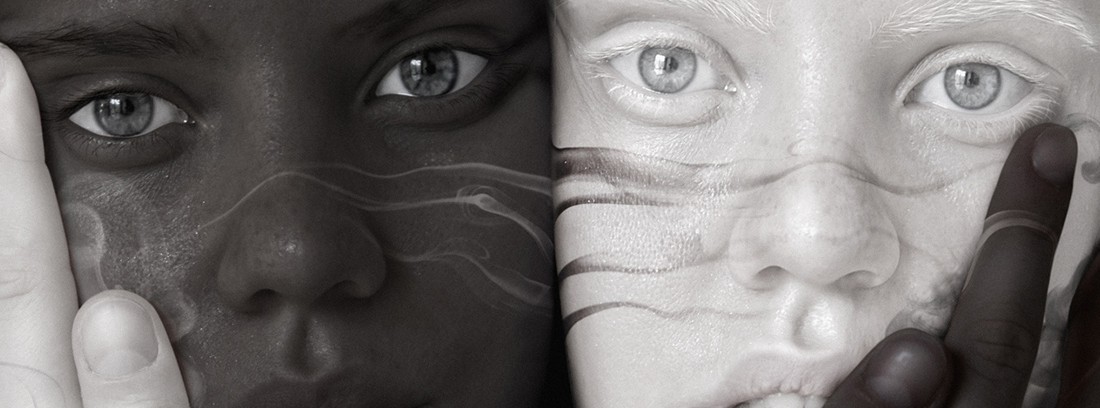Albinism: An Overview of This Genetic Condition

It is a genetic disease characterized by absence or decrease (hypopigmentation) of pigmentation in the skin, eyes and hair. It is a rare syndrome, affects 1 in 20,000 people. It affects all races equally and there are no differences between boys and girls.
Cause
The cause of albinism is the defect in the gene which is responsible for the synthesis and distribution of melanin. In albinos this gene does not work correctly and, therefore, all the body structures that are colored by melanin are no longer colored: skin, eyes and hair.
Albinism is inherited through autosomal recessive pattern (It is not linked to the sex chromosomes and, in addition, it needs both alleles of the gene to be affected for the disease to manifest itself).
The parents of an affected child may not have symptoms and, on average, the possibility that the brothers or sisters of an affected child have the symptoms is 1 in 4. For a child to have the symptoms of an autosomal recessive disorder, they must receive the recessive gene from both parents.
Types of albinism
-
Generalized: oculocutaneous albinism (affects all parts of the body that have melanin).
- Type I: it is the most severe type and there is no melanin synthesis.
- Type II: it is the most frequent and the mildest and there is a minimal synthesis of melanin.
-
Localized or partial (affects some parts of the body):
- Ocular: only the eyes are affected.
- Sex-linked: variant linked to the x chromosome and that only affects males. They can associate deafness.
- Partial: Characterized by the appearance of small localized areas lacking pigmentation, such as a small lock of white hair.
Symptoms
Albino children are characterized by having the white or slightly golden hair, very pale skin and blue-violet or reddish eyes (that is, since the iris does not have pigments, when light falls on the eye, the blood vessels are reflected).
Albino children can have a decreased visual acuity, increased sensitivity to light (photophobia), involuntary eye movement (nystagmus) and strabismus.
The eye disorders of albinism are caused by a deficit of pigmentation of the retina, iris and choroid. The lack of pigmentation in the retina produces lower visual acuity.
With the exception of visual and skin problems, albino children are normal, intelligent children who can fully develop their intellectual and social life.
Diagnosis
The diagnosis is made by the child's appearance and can be confirmed with a ophthalmological study.
The visual problems of albino children can be alleviated by:
- to reduce photophobia and be able to do outdoor activities
- Prescription glasses: to correct visual acuity problems (astigmatism or farsightedness)
- Surgery to correct strabismus
- Visual exercises to reduce nystagmus
Lack of melanin in the skin can cause serious problems if proper measures are not taken:
- Use sun creams with a high sunscreen
- Wear a cap
- Inspect the skin routinely for spots, warts, or moles. This type of skin lesion is not frequent in the albino person, so it should be consulted immediately with the dermatologist.
(Updated at Apr 13 / 2024)